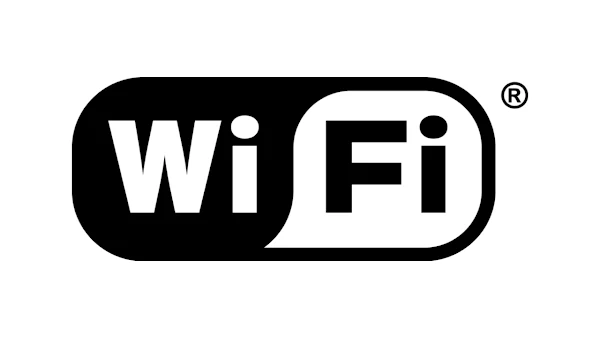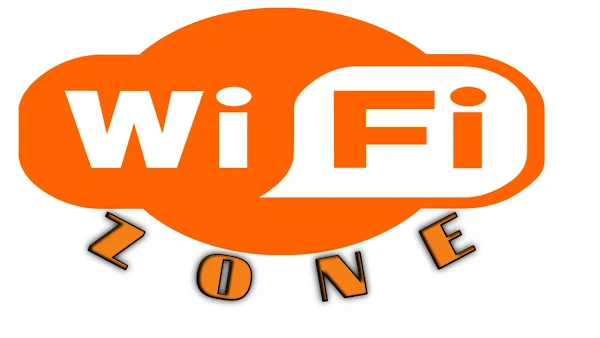what is the meaning of wifi?
Wireless Fidelity [Wi - Fi]
The full meaning of the word Wi-Fi is Wireless Fidelity. Wi-Fi is a technology for connecting computers / digital electrical devices to the Internet wirelessly. Wi-Fi is a popular wireless networking technology that uses wireless waves to connect to high-speed Internet and networks. This is a wireless LAN standard, technically known as IEEE 802.11.

Wi-Fi enabled devices such as laptops, video game consoles, smartphones or digital audio players can be connected to the Internet through a wireless network access point. An area with a Wi-Fi network for Internet access is called a hotspot. Its data communication speed is very low and the security system is also weak.
Features of Wi-Fi
1. Wi-Fi coverage is available in a wide range from a limited range.
2. Bandwidth of 10 Mbps - 50Mbps.
3. Wi-Fi is cheaper than LAN (Local area network) and in some cases provides free service.
4. Any quality Wi-Fi will work anywhere in the world.
5. To connect to a Wi-Fi LAN, the computer must have a wireless network interface controller.
6. Connecting a digital subscriber line modem and a Wi-Fi access point to the router gives Internet access to all devices within its reach.
7. Wi-Fi and WiBro (Wireless Broadband) A portable Wi-Fi router easily creates its own Wi-Fi hotspot that connects to the Internet via a cellular network.
8. Phones powered by iPhone, Android, Bada and Symbian operating systems can create wireless connections.
9. In addition to the router for client-to-client connections, Wi-Fi devices can be connected in ad-hoc mode.
Disadvantages of Wi-Fi
1. Data transfer is quite slow.
2. It is difficult to get coverage without specific area.
3. There are network security risks.
Use of Wi-Fi
1. Home and Office - In addition to courts, Wi-Fi also provides services in public spaces of hotspots.
2. Wi-Fi hotspots are set up for free or commercially. Free Wi-Fi is provided at airports, hotels, restaurants, etc.
3. Many cities around the world today have city-wide Wi-Fi networks.
4. Universities and educational institutions are being brought under the purview of Wi-Fi, which allows students to easily access the Internet through their laptops or smartphones while sitting in educational institutions.
Internet access with Wi-Fi
Suppose you have a desktop of your own, a laptop of your father and two smart phones of your two younger brothers and sisters. It has built-in Wi-Fi support on all devices except your home desktop. Now your dad has a high speed broadband connection at home via cable or cable and he connects it to his laptop to access the internet. Sometimes you use the Internet on your desktop computer with your father's permission. But since the cable line is one so your dad can't use it when you use it. But you can't use the line even if you need it while using Dad. So if you complain to the father to arrange a separate line for you. Again, younger brother and sister both use smartphones. So they also want to get internet connection on their device. They also continue to tell their father. Do you understand how complicated your father is? He will not be able to take separate internet connection for all of you. That is a matter of cost. He wants a system so that all of you, including him, use the same internet line. Can you help your father?
Yes you can, but you need to get a good idea of the whole point of accessing the internet with the help of Wi-Fi. Wi-Fi allows you to share Internet access on both wireless and wired devices at the same time. For this you need to know two things. These are-
A. Wireless Access Point
B. Wifi Hotspot
A wireless access point, or acronym for access, refers to a hardware component that connects a device connected to a wired network to a device with a wireless facility. In other words, in this case, the wireless device can be connected to the network of the wired device, that is, the Internet connection. The most widely used device for data communication and networking is a router with which the Internet can be connected via cable and then other digital devices with that router can be connected to the network wirelessly. Now how will the device connected to the network by this router or its medium connect other devices to the Internet network access? This requires a Wi-Fi hotspot.
A WiFi hotspot is an area with access to an accessible wireless network, from which the Internet can be easily accessed with the help of the respective device.
Laptops or desktops with Wi-Fi devices can easily become Wi-Fi hotspots. As a result, the laptop or desktop's Internet connection can be used via Wi-Fi on other devices with Wi-Fi.
For example: Internet is being used on laptop. Now, if you want, you can easily share the internet of that laptop on mobiles, desktops, tablets or other devices that have Wi-Fi.
Read Also: What is Bluetooth? The Ultimate Guide.
However, we go back to our old problems. Can't you solve your father's problem this time? Surely you understand that buying a router in your home will solve the problem. After connecting the cable to the router, all the Wi-Fi enabled devices in your home can be connected to the hotspot created by the router and access the internet at once.
Moreover, internet access will still not be possible for everyone in your home. The desktop you use does not have a built-in Wi-Fi device, so you cannot connect your desktop to the hotspot. To solve this problem, you need to buy a suitable Wi-Fi device (USB Wireless Wifi adapter) for use on a separate PC and make it suitable for connecting the active PC to the hotspot.
Wi-Fi Zone
Wireless internet connection using router creates wireless network system, internet access is provided in all public places like airport or coffee shop, any educational institution including school-college, big business establishments, government-private office-court. Basically such wireless network systems are used to save on the cost of additional cables and installation hassles where multiple users have to use the same network or internet line. These are called Wi-Fi zones, some of which can be used for free, while others are controlled with a password for private use. In the open zone, you can connect with your smartphone without any restrictions. In any case it is a very easy and effective method to use.

Most of the educational institutions nowadays set up free Wi-Fi zones in collaboration with the government or the private sector. In all these Wi-Fi zones, the teachers, students, employees of the educational institution, even anyone who is in that zone can connect to the internet from here. There are advantages and disadvantages to such a free Wi-Fi zone. As it is a free Wi-Fi zone, everyone in the educational institution can always be connected to the internet for free. It is also cost effective for students to use the Internet. Moreover, with the opening of the free Wi-Fi zone, many general technology enthusiasts are interested, but those who are financially incapable of using the Internet can also participate in various welfare activities in their home country as well as their own development through technology services. Such a free Wi-Fi zone could play a key role in bridging the digital divide or technological disparities that exist in middle-income countries like Bangladesh.
But the free Wi-Fi zone also has its drawbacks. It can be seen that the main times of the day when the educational institutions and the surrounding areas are crowded, there is often an extreme shortage of bandwidth due to the fact that multiple users are connected to the network at the same time. This results in extremely slow internet connections most of the time in free Wi-Fi zones. Although such a free Wi-Fi zone has been established in the college, since it is open, it is not possible to securely exchange any confidential or important information through this network. Many people can use this internet connection to carry out various misdeeds, anti-social or criminal activities. In this case, it is not possible to take any preventive measures.
Free Wi-Fi - In case of emergency transactions, any confidential information can be sent from the zone with encrypted or password. In this case, the original information can be encrypted through various encryption methods and sent to a specific destination. In this case, the customer must have the necessary method or encryption code to decrypt that data. Otherwise the data can be sent in a format that can be locked with a computer password. In this case, you need to know the password required to read the customer's data. The following steps need to be taken to keep personal Wi-Fi routers secure.
1. Change the username and password provided by the factory setup of the Wi-Fi router.
2. Specify the MAC address for the individual router so that no unfamiliar MAC address can connect to that router.
The difference between a wireless access point and a Wi-Fi hotspot
Wireless access points and Wi-Fi hotspots are two completely different things, although they seem to be the same thing. A wireless access point is a hardware device, commonly called a router. However, today's modern devices have the advantage of a router. This means that just as they can be connected to a router individually, they can also be used as a router.
Wi-Fi hotspots, from wireless access points to access points are important for hardware performance. A Wi-Fi hotspot is a specific physical address location in which the router can enjoy network or internet access via cable lines. This means that the router itself creates a hotspot within which all Wi-Fi enabled devices can access the network or the Internet.
Another important difference between a wireless access point and a hotspot is that a wireless access point will be needed only when the wired device network needs to be shared on a wireless network (Wi-Fi enabled device). In this case, without the help of wireless access points, these devices can connect to the network of other Wi-Fi supported devices. This is called portable hotspot tethering. Anyone can create a mobile hotspot on their mobile using their cellphone or any external device that can be connected to the cellular network and can easily set up a WiFi network at home.



